Purring westward out of Melbourne over the sublime Westgate Bridge, for once, I wasn’t behind on the wheel. Resisting my control-freak urges to be in command of a self-drive, the rolling scenic splendour soon swept me up, in my comfy leather recliner passenger seat. I was contentedly transfixed, as were my fellow band of travellers from Britain and Germany, on-board a Great Ocean and Beyond small group tour.
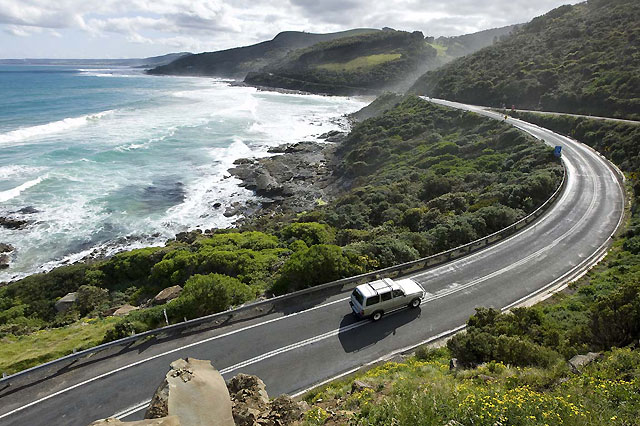
It’s one of the Great Southern Land’s most rewarding drives, roving by road from Melbourne along the Great Ocean Road (GOR), to the sweet glories of South Australia. Just over 18 months ago, the husband and wife team behind Taste of Barossa, Nikki and Dallas, launched this boutique small group tour offering, which laces together Victoria’s coastal splendour with the lesser-trafficked gems scattered across the South Australian countryside, all the way to Adelaide.
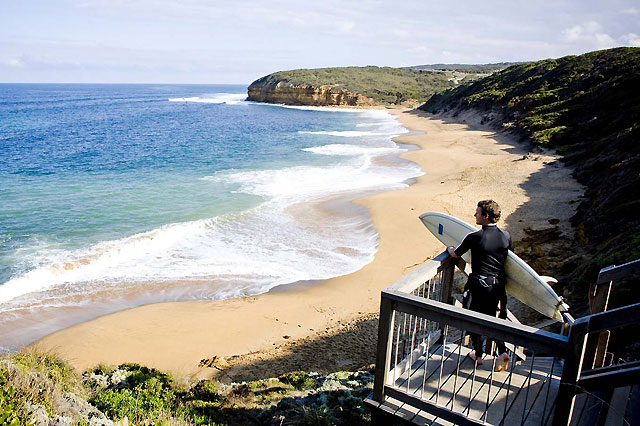
Day One spirited us from Melbourne to cute-as-a-button Port Campbell, before a second night’s stop in even more delectable Port Fairy. The swanky seaside town of Torquay, where yummy Mummys and designer dogs in their handbags promenade about, is the GOR’s gateway. During a morning coffee, I noticed “slimming water” on the menu at the organic café, alongside mugwort and matcha powder, which is supposedly favoured by Buddhist monks for clarity. I settled for a flat white.
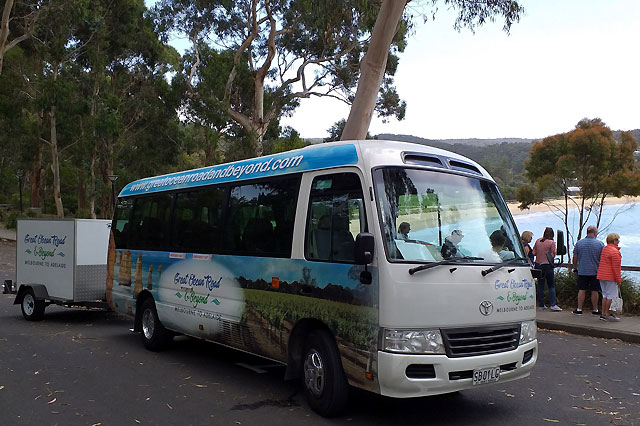
Foam-flecked waves crashing ashore serenaded our arrival into Torquay, the cradle of Australia’s surfing culture, as showcased at Surf World Museum. We noticed how all of the premium surf brands are headquartered here, too. Our effervescent driver, Steve, was never short of illuminating nuggets of wisdom, pointing out that Torquay boasts Australia’s safest surf – no great white sharks lurk in these parts.
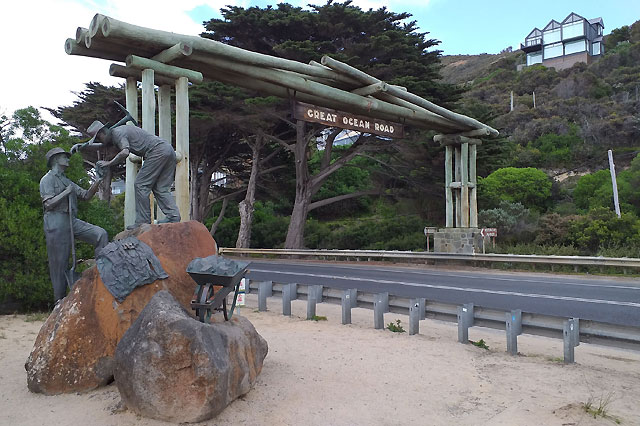
A photo-stop is amply warranted at Memorial Arch, a truly magnificent monument that spans the road in honour of the workers who tirelessly constructed this bewitching tourist route. The arch and workers sculpture pay homage to the 3,000 returned soldiers who built the 243km-long road, after coming home from the battlefields of World War One, desperate for work. The 13 year long public works project was finally completely in 1936, dedicated in honour of those who lost lives in the war. The wonderful arch actually replaces its predecessor, which was razed during the 1983 Ash Wednesday bushfires.
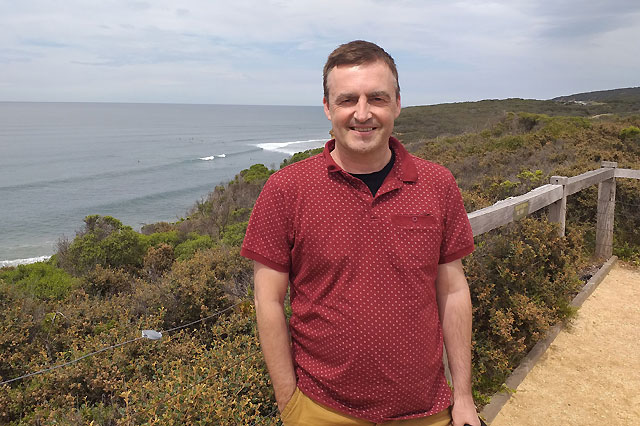
Mercifully, this summer’s horrific Australian wildfires haven’t marred the Great Ocean Road. Tracking west, the gazillion dollar beaches continue spilling forth along Surf Coast, like the booming breakers of Bells Beach and lovely, languid Lorne. Primped and preened, Lorne is a meticulously manicured beachside honeypot, wildly popular for weekenders among Melbourne’s smart-set.
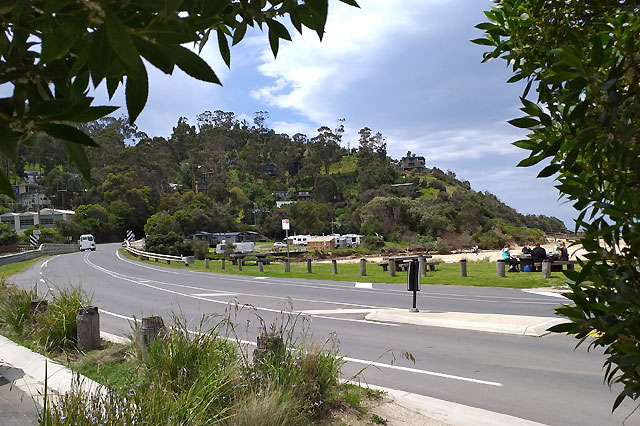
After savouring the golden sands of Lorne’s crescent-shaped beach and the glittery real estate, we hugged the coastal road’s curves and hair-pin bends, at times so tenuously close to the water, drooling over the ravishing vistas as we made our way round to Wye River for a fabulous lunch-break. Passing through Apollo Bay, backed by majestic tumbling hills, the radiance of coastal splendour gave way to the lush and verdant highland embrace of Otway National Park. We took a fabulous walk within the forest finery at Melba Gully, home to one of Australia’s giants, a 300 year old Otway Messmate. With a trunk circumference measuring 27 metres, these big boys once thickly flanked the Otway Ranges, before being felled.
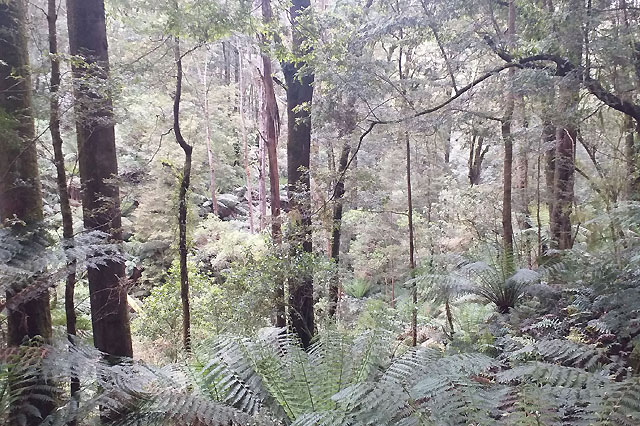
Very little sunlight penetrates the dense canopy of Melba Gully, thronging with myrtle beech and blackwood trees, and a flourishing understorey of ferns, mosses and liverworts. Feeling suitably revivified from our communion with rainforest, we ventured back onto the road as the oceanic prize-draw shuffled into view: the Twelve Apostles. This spell-binding collection of toothy rock stacks, and their relentless fight for survival, remain Australia’s most-photographed coastal feature.
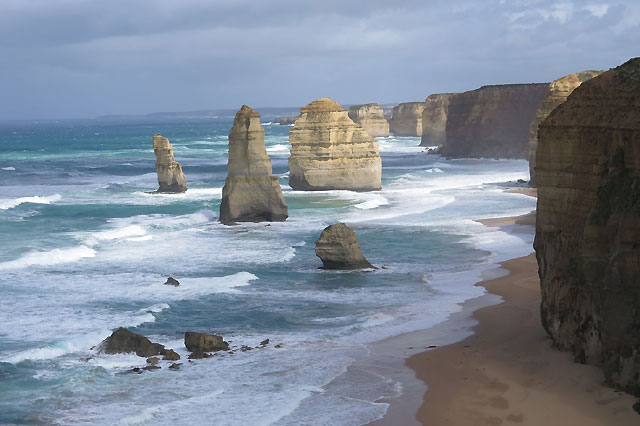
Some apostles have already been consumed by the pounding ocean, and only seven fangs of rock are still standing. As giant puffy cumulus clouds billowed out to sea, the shifting, playful light cast these rocky fangs in a multitude of hues. It’s a beguiling, riveting and ever-changing spectacle. A short drive westwards unfurls more striking natural attractions.
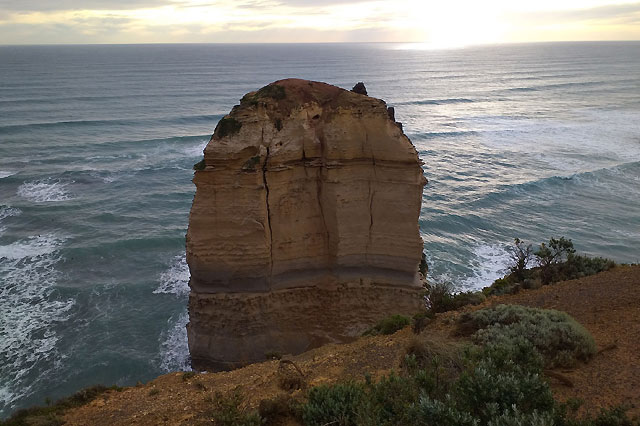
According to the nursery rhyme, London Bridge is falling down. And true to the spirit of the rhyme, London Bridge has indeed fallen down. Formerly a double-arched rock platform linked to the mainland, visitors could once walk across one of the arches. But in 1990, one of the arches collapsed, stranding two terrified tourists on the newly formed island, before being rescued by a helicopter. Lo and behold, it happened to be a British businessman and his travelling secretary, who were having a furtive fling. The shocking truth was revealed to his wife back in the UK, as she watched their dramatic helicopter rescue on the television news. I wonder what the homecoming was like.
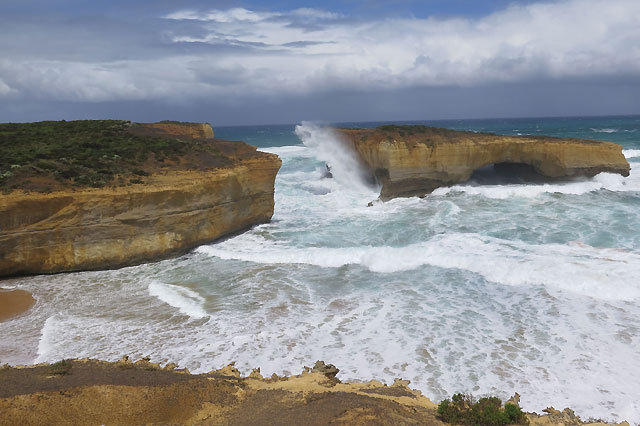
After a restful night’s sleep in charming Port Campbell and a cracking breakfast at the Alcove Café, Steve drove our perky group back to for a second serving of the Twelve Apostles and the ensuing visual feast. The wind was ferocious, theatrically pounding the shoreline with the spume of the Southern Ocean, as crows battled to take refuge, under the sentinel-like eye of the Apostles.
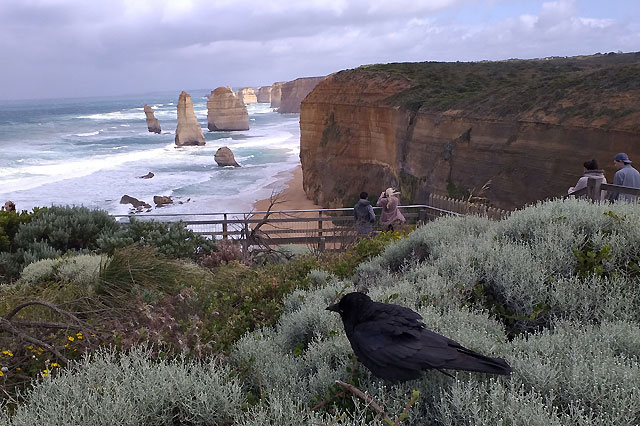
It is a riveting sensory experience with the nature’s tempest. The cliff-clinging foliage including silvery tussock grass, coast cushion bush and coastal spinach is particularly hardy, constantly under siege from the salty winds. From there, we were exhilarated by the jaw-dropping glory of Loch Ard Gorge, the site of Australia’s most dramatic 19th century shipwrecks.
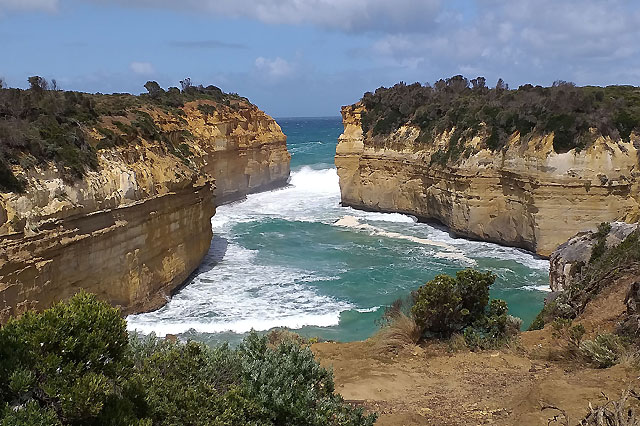
This stretch of coastline is ominously dubbed Shipwreck Coast, underscoring its treacherous backstory, as strikingly exemplified by the 1878 Loch Ard tragedy. Just a few days out from completing its three month voyage from Britain to Melbourne, the clipper encountered heavy fog, didn’t see the Cape Otway lighthouse, and by the time the fog cleared, it was too late to clear the coastline which it was barrelling towards. Running aground on the reef, 53 passengers and crew lost their lives. The only survivors were two teenagers. Tom Pearce, who had come ashore, heard Eva Carmichael’s shouts and returned to the ocean to rescue her. Alongside the dreadful loss of life, an enormous assortment of cargo was destroyed, including luxury goods.
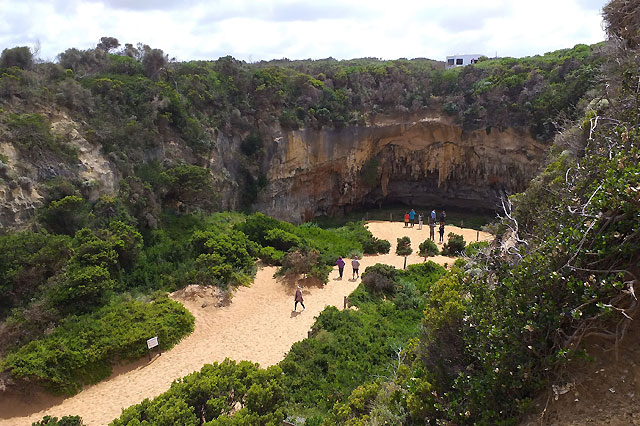
A large decorative porcelain peacock, made by Minton, was due to be displayed at the Melbourne International Exhibition. Miraculously, the peacock was recovered completely intact and is now on permanent display at the Flagstaff Hill Maritime Museum in Warrnambool. Standing on top of the limestone cliffs as the thunderous rush of water surged into the narrowing opening of the gorge is an arresting sight. Two nearby rock pillars have been named Tom and Eva. The gorge is a treasure chest of raw natural beauty, wrapped in brilliantly crafted walking trails, accentuating the scenic finery. Our group were enthralled by the experience.
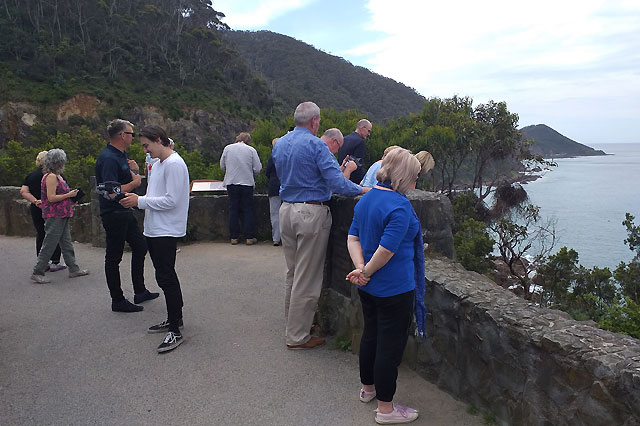
Great Ocean Road and Beyond combine awe-inspiring sightseeing, local secrets and vivacious company with elegant four-star accommodation options. Our first two overnight stops were in the photogenic villages of Port Campbell and Port Fairy. Breakfast and lunch is covered by the tour, at characterful cafes and eateries where you get an indelible introduction to the friendly locals, while dinner is up to you, from the plethora of local hospitality options. Nikki and Dallas have crafted a thoughtfully executed itinerary, immersing you in the splendour of Southern Australia. It’s a unique tour offering, delivered with sparkle and charisma, eliminating the need for you to do the driving. Just sit back and soak it all up, in style and comfort, on this four day guided small-group tour. https://greatoceanroadandbeyond.com.au/
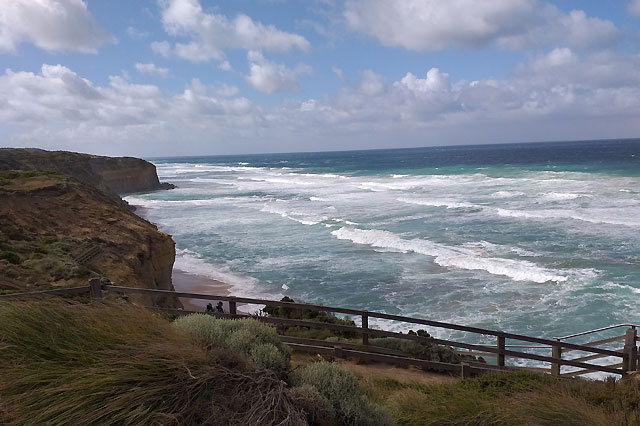
Are you planning a great escape to the diverse riches of South Australia? Make your first stop the official tourism website, awash with trip inspiration and touring ideas. www.adelaide.co.nz
Award-winning Air New Zealand fly non-stop from Auckland to Adelaide, four to six times a week, whisking you direct to the delights of South Australia, eliminating the hassle of airport transits and onward connecting flights. For best fares and seats to suit, jump to www.airnewzealand.co.nz

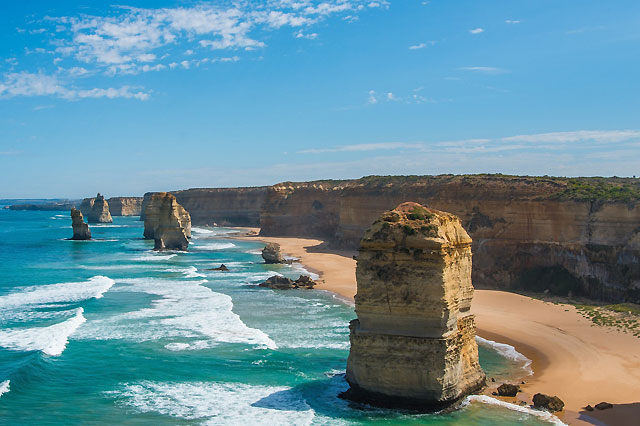
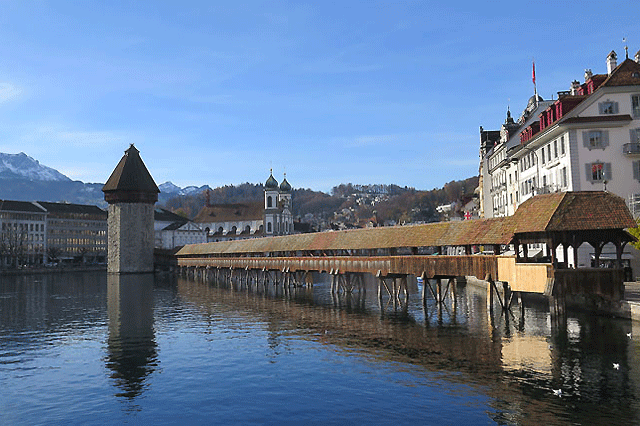

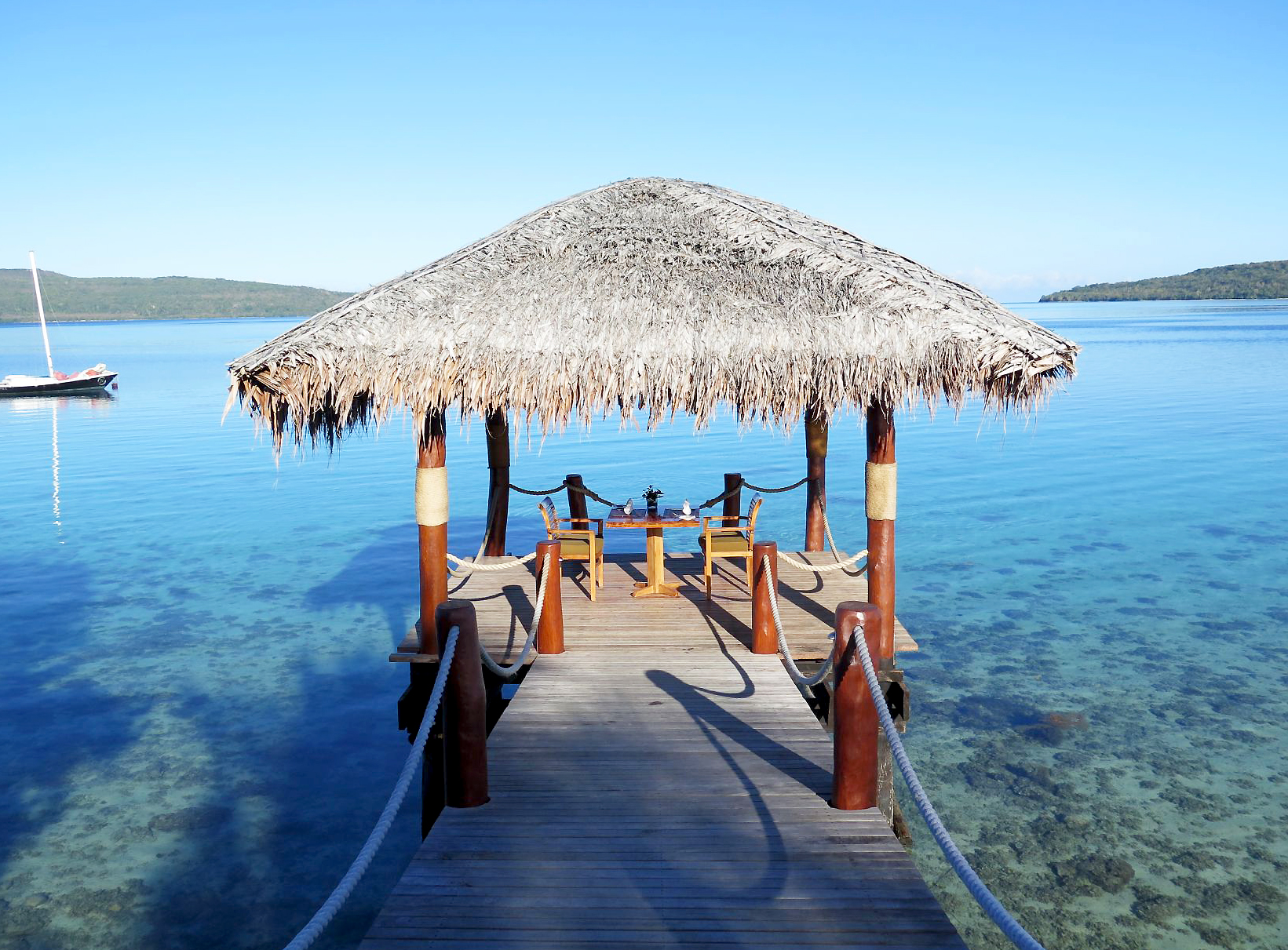
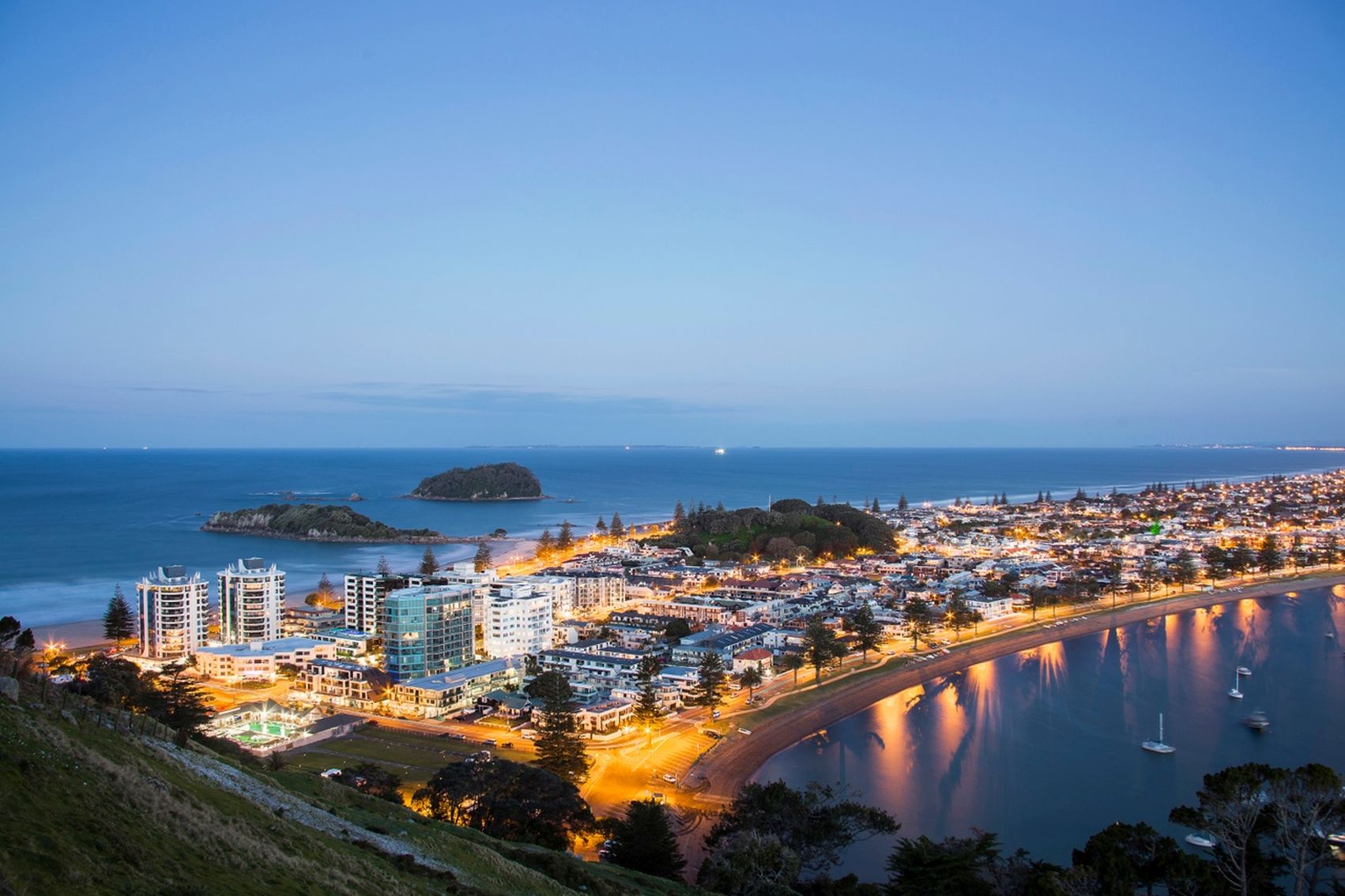
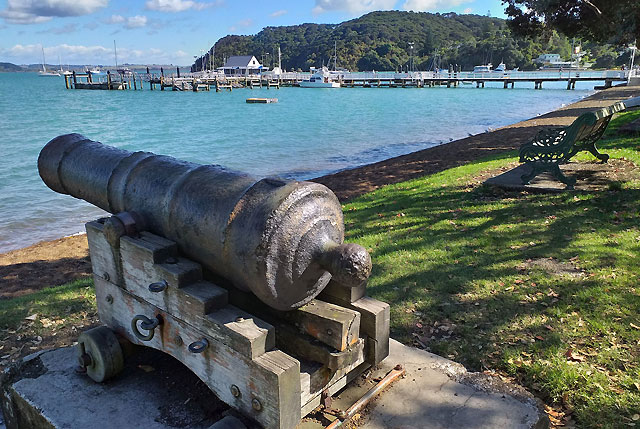
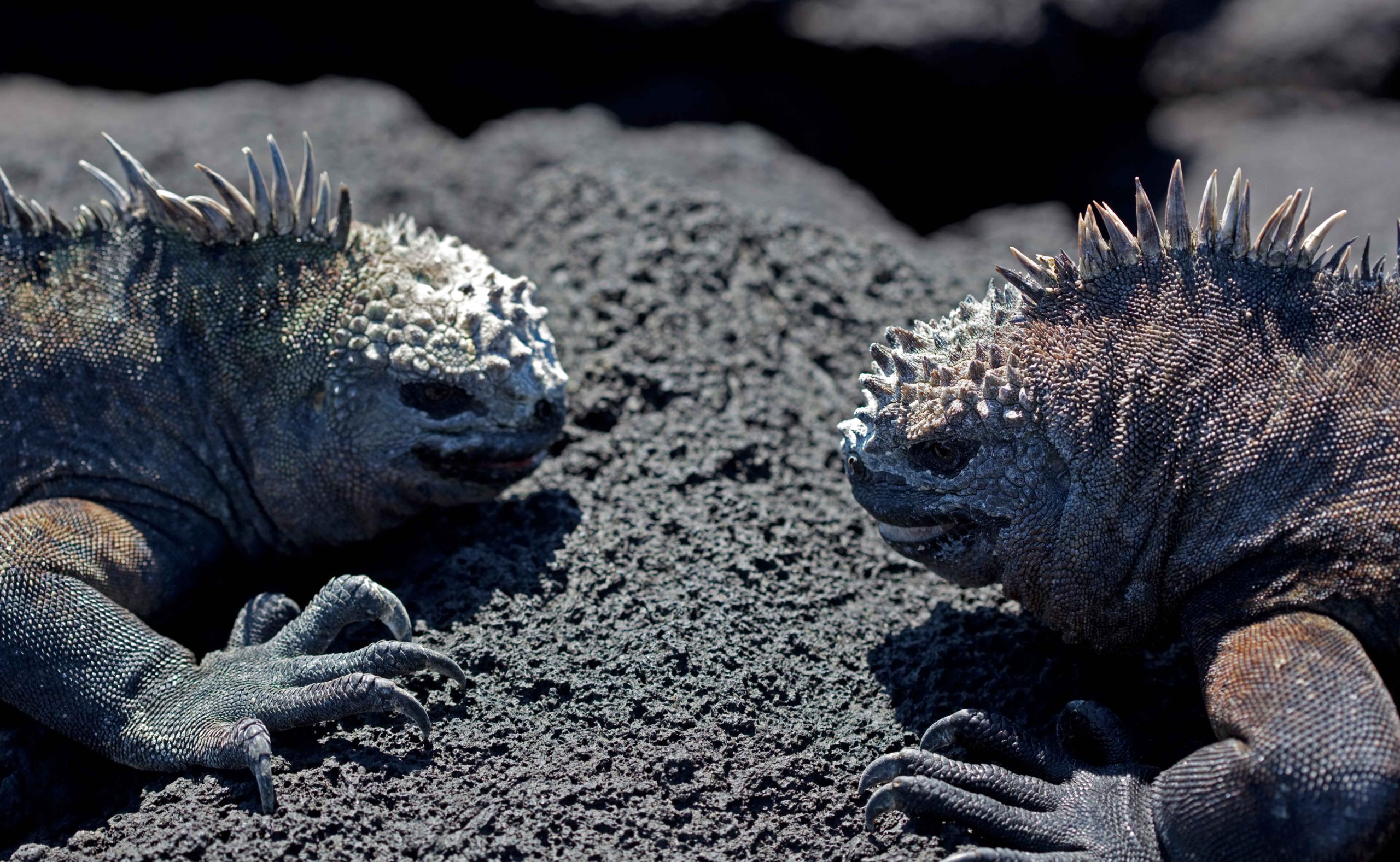
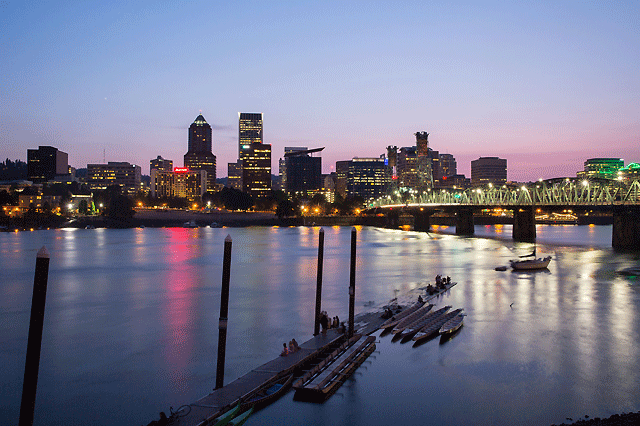


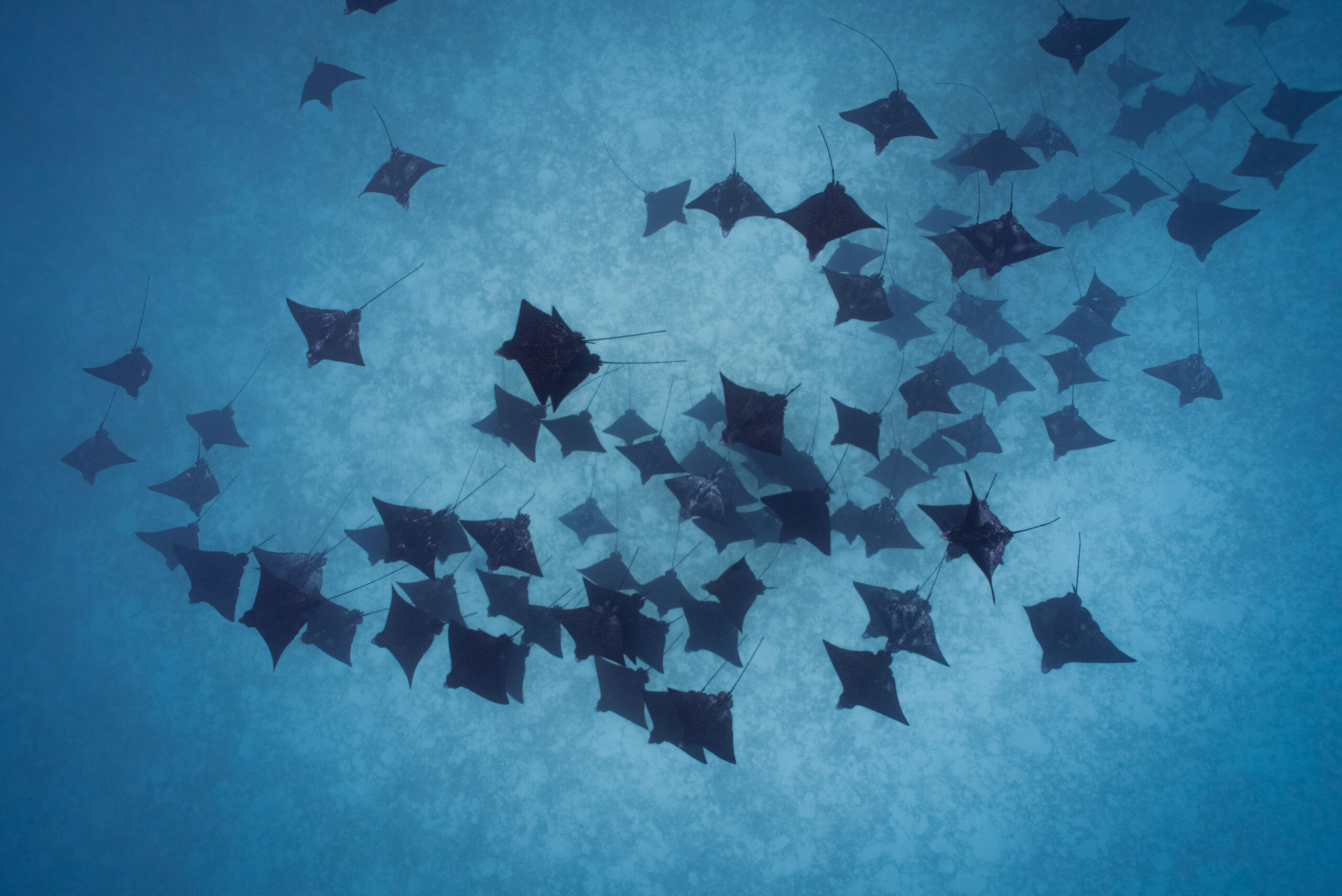

Recent Comments